The First “Sue Nami”
A witty PSA produced in partnership with the United States Geological Society to raise awareness about tsunami dangers and safety measures.
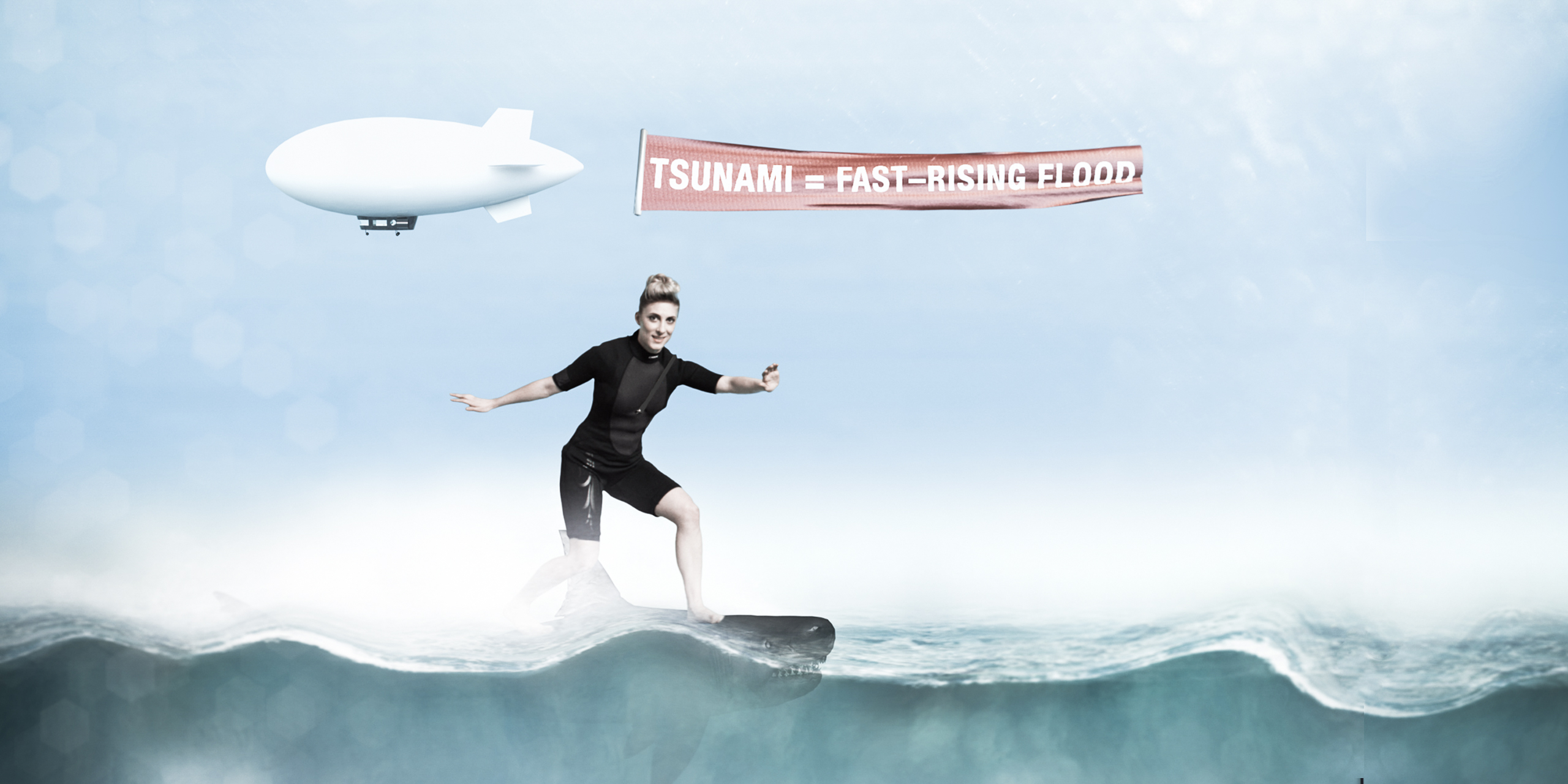
Spring 2013
Building upon the work of the fall 2012, Next Wave branding and identity campaign, this Spring 2013 class was challenged to create a visually appealing, scientifically-based, entertaining and quality motion graphics film for USGS partners, to disseminate important tsunami early warning messages for Southern California.
We are trying to help California be safer in tsunamis.
– Dr. Lucy Jones, USGS
Scientists study what tsunamis do, and try to understand what their impact will be. They also know what are the messages they need the public to learn, regarding tsunamis; to disseminate those messages in ways that are educational and entertaining, compelling and memorable, they turn to designers. Partnerships like these are highly effective in allowing scientists to increase the public’s preparedness and safety awareness in the event of natural disasters.
A consortium of government and emergency management organizations, comprised of: California Emergency Management Agency, the Center for Research on Environmental Decisions, the National Weather Service, the Rand Corporation, UCLA Center for Public Health and Disasters and Washington Emergency Management, had the need to communicate preparedness messages, specifically about tsunamis, to a broad sector of the general public.
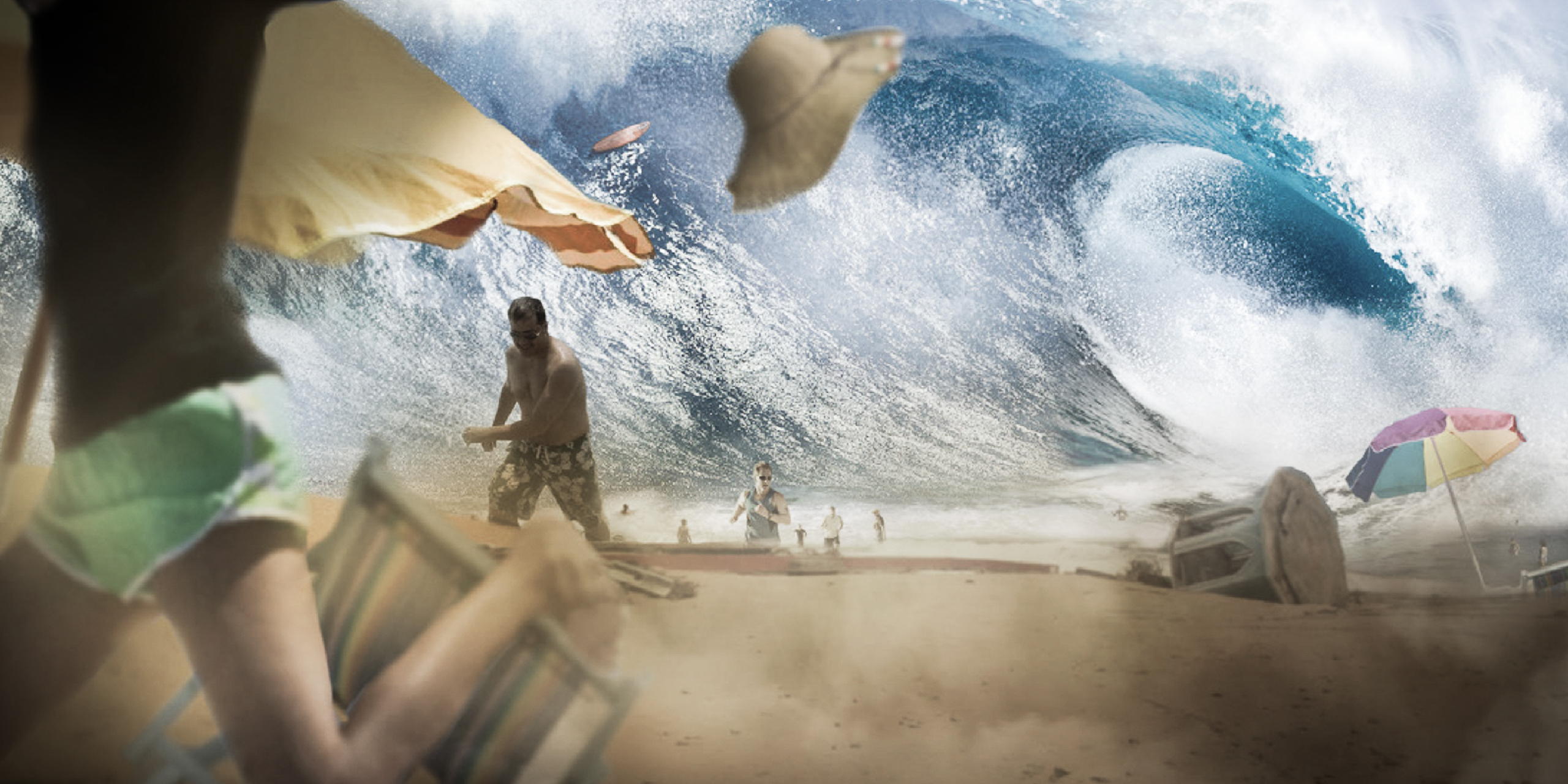
Partnerships, like this with USGS, allow designers and filmmakers the chance to use their creative problem solving skills to harness the precious commodity of public attention, with the hope that with every view, every click, every share, we can help bring awareness to tsunami risk perception, and lifesaving information that Southern California audiences need to know, and remember.
– Elisa Ruffino, Director, Designmatters
One way in which they have achieved successful message dissemination in the past was through collaborations with Designmatters, which brings innovative design across diverse communication platforms. Since 2008, with the Great Southern California ShakeOut, Designmatters and the U.S. Geological Survey’s SAFRR Project have enjoyed frequent collaborations around creating and disseminating public safety messages around catastrophic disasters.
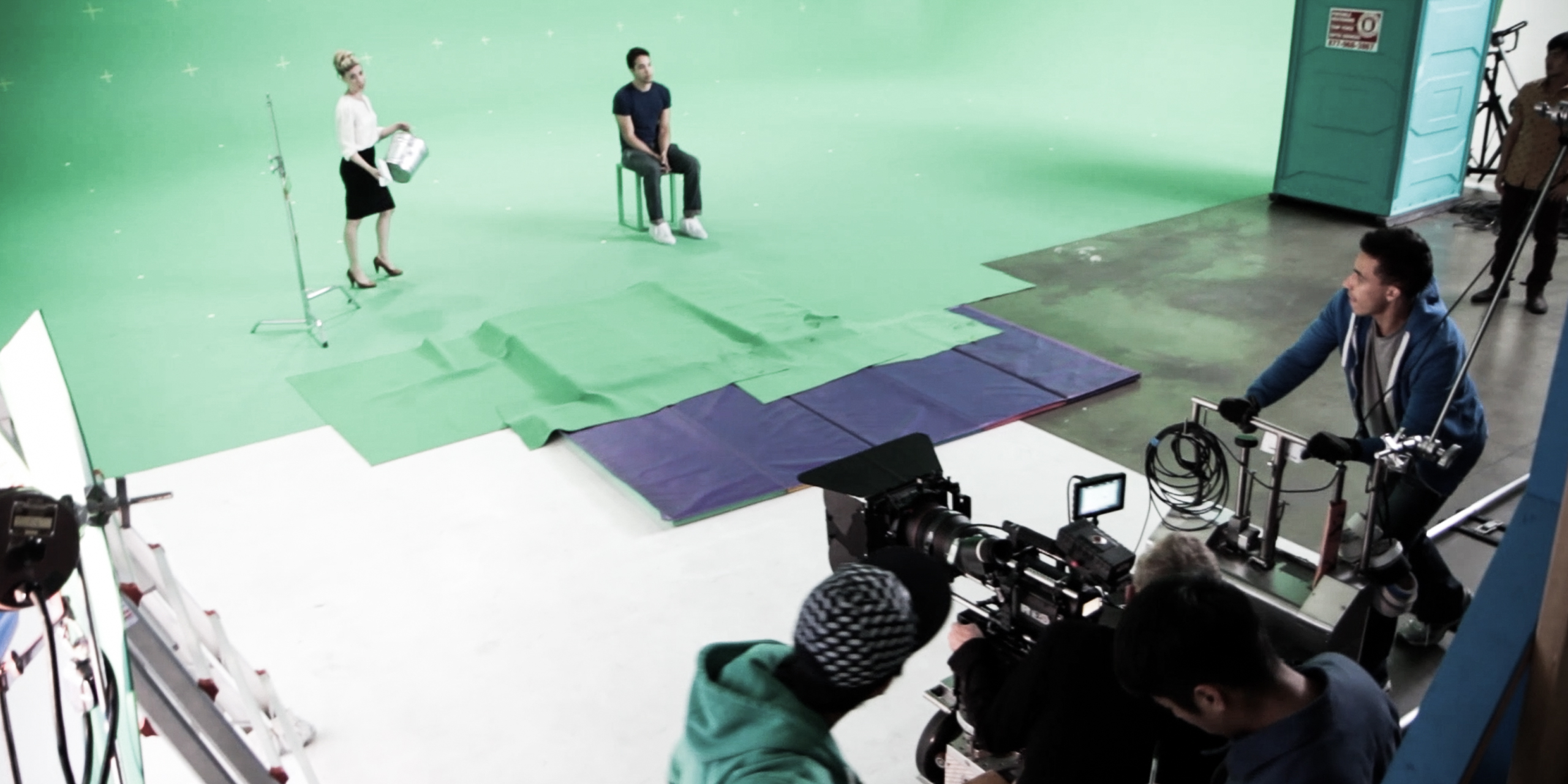
The Digital Motion Compositing department teamed with USGS to translate vital information about tsunami preparedness into a short, narrative motion film. The class created a film that is effective in its relaying tsunami readiness information to all people in the region, whether they work there, visit there, or live in coastal communities of Southern California.
The class delivered exactly what we were looking for: a piece of “subversive education” where the viewer, unknowingly, has had his/her tsunami awareness raised while being engaged and entertained
– Sue Perry, Staff Scientist, Natural Hazards Mission Area SAFRR Project: Science Application for Risk Reduction, USGS
In an intensive, 14-week process, the class addressed the partner’s foremost question and concern: “How do you make tsunami awareness cool and fun, and have people learn and have them want to look at the film again and again?” The students’ answer came in the form of a short film: “The First Sue Nami.” In creating the character, “Sue Nami,” the class found their way to impart vital tsunami information to the audience.
Within two weeks, the class moved from a broad range of questions on the issue to three, highly focused, essential questions. These questions were used as the heart of, and structure for, the film:
Knowing that all three questions imparted important information to the audience, the class next directed their attention to disseminating the information. They knew that howthe knowledge would be imparted was key to retention of its critical information, and they understood that while their film would be fun and entertaining, its information could save lives.
As a filmmaker, my knowledge of visual effects was minimal, and this class helped me really understand it in many ways, from pre-production, during production and staging, and through post production.
– Brian Fenner, Student, Graduate Broadcast Cinema
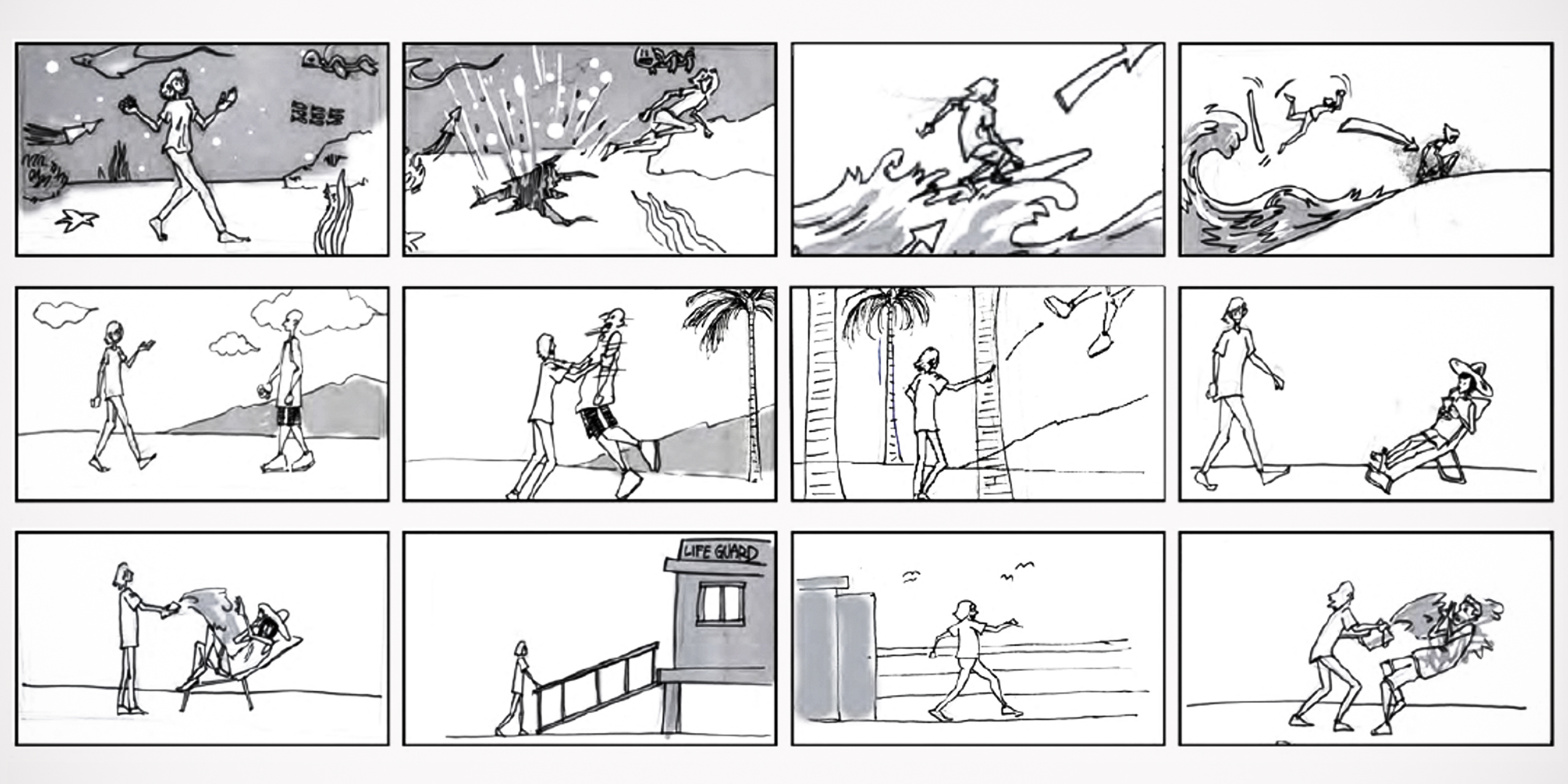
During the 14-week time frame, the class made several presentations and idea pitches to the stakeholder. Ultimately, three ideations were proposed. The partner then selected what it felt would best fulfill its needs, at which time the students moved forward, and their vision for the short, motion film began to take form.
The class settled on their main character: Sue Nami, someone they felt their target audience could relate to and, therefore, make their message points accessible. After strategizing about the film’s right tone, the class chose comedic, and opted not to be preachy or reproach people for a lack of information; rather, the film would always entertain the audience, while concurrently informing them.
Storyboards were visualized, drawn and revised. From there, the style of film, and how the piece would look, became clear. The students conceived of an interactive piece, one in which the main character would engage the environment around her. With the beach being the agreed upon place to set the story, the students began location scouting, exploring southern California’s beaches from Palos Verdes, to Santa Monica and Malibu’s Point Dume.
What we wanted was secondary environmental messaging that would be our way of fulfilling the 5 message points and goals of USGS, and we accomplished exactly that.
– Ming Tai, Faculty, Digital Motion Compositing
From the beginning, the class knew the project was an ambitious one. All of the production processes, from rigging to green screen, and all of the post-production details, from editing to photo compositing, were ones that would make or break the project. Mixing humor and action/adventure genres, with state-of–the-art special effects, the students were able to translate vital messages about tsunami preparedness.
The film’s short expanse of screen time, challenged the students to search for, and discover, multiple ways to convey large amounts of information in one minute and thirty seconds. To do this, without inundating the viewer with extra verbiage, necessitated increasing the quantity of messages delivered via secondary messaging. Among messages those were:
1. A blimp hovering in the sky with a message trailing behind that reads: “TSUNAMI = FAST–RISING FLOOD.”
2. A beach scene that has a sand castle with the words: “UNSAFE AREA,” leaning against its side.
3. A wooden sign on the side of beach path, that reads, “TSUNAMI=WALLS OF WATER.”
4. A sign on pole on a dock, states, “NEVER COME BACK TO WATCH THE TSUNAMI.”
5. A sign on a pole, which says: “HIGHER GROUND=SAFE.”
The decision to add the beach locale via green screen was an important project strategy. Doing so meant that the location could be easily changed, if later, the partner determined to customize the location to a different site. As tsunamis can strike around the world, this was especially important for the film’s ongoing capacity to relay preparedness information to a larger audience. Its message, “Know the tsunami. Recognizing a warning sign can be a matter of life or death,” could be expanded to include the safety of ocean visitors everywhere.
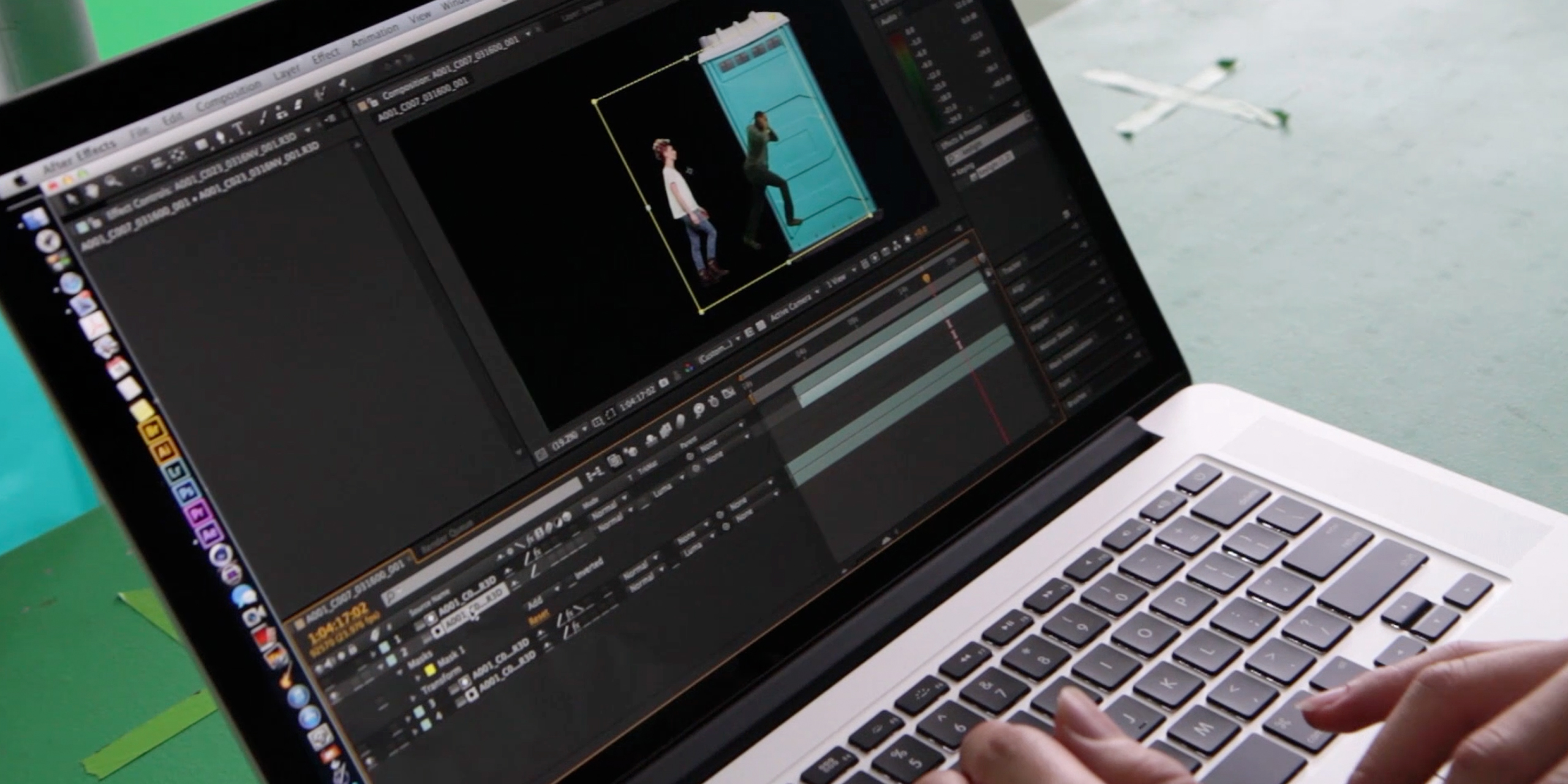
When it comes to tsunamis, certain messages are crucially important to the public’s safety, and they have not been relayed successfully by conventional hazard education methods. This Next Wave 2 changed that by keeping the film’s tone light, engaging and entertaining in the face of subject matter that was serious, with potentially life-threatening and life-saving implications. In so doing, “The First Sue Nami,” succeeded where others have not, by letting people know how to recognize when a tsunami is coming and how to get safe before it arrives.
The potential is great in terms of places for “The First Sue Nami” to be shown and aired: as a messaging piece for the audience before the movie, as a movie trailer, or, on commercial airlines flying to Hawaii. By changing the backgrounds, or changing the modules, i.e. rocky beaches, tropical shores, the same message points can be used to address different locales.
The USGS SAFRR team has commissioned Art Center to expand “The First Sue Nami” into a series of three companion films for different locations along the West Coast. Ming Tai as faculty will remain at the helm.
The First Sue Nami was exhibited in Cancun, Mexico at the 2017 United Nations Office for Disaster Risk Reduction: Global Platform for Disaster Risk Prevention! The conference brought together around 4,000 participants – from more than 180 countries.
A witty PSA produced in partnership with the United States Geological Society to raise awareness about tsunami dangers and safety measures.
Behind the scenes of the "First Sue-Nami" PSA created in partnership with the USGS to raise tsunami awareness.